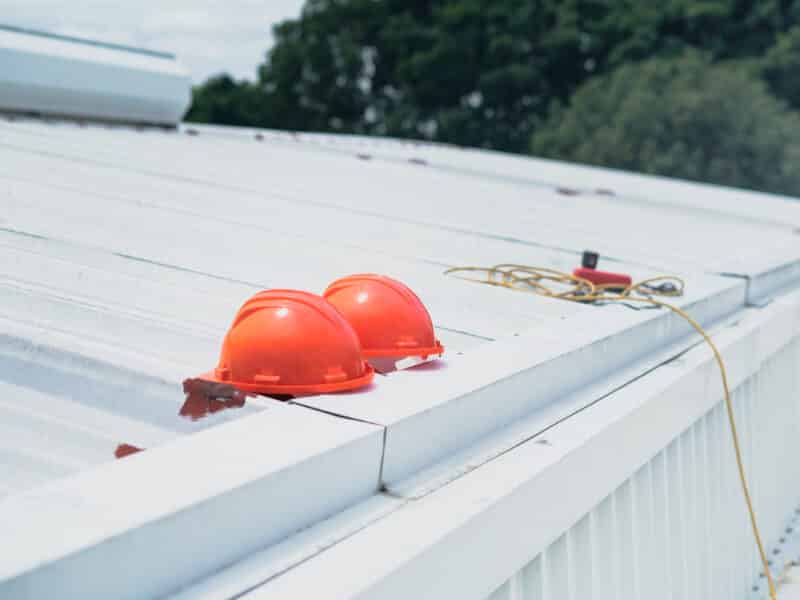How to Replace Gutter?

A gutter is a shallow channel that runs along the lower edge of your roof to collect and drain rainwater from your home. A proper gutter system is essential in areas prone to heavy rainfall, and builders ensure that they are installed in every home and function properly.
However, despite their best efforts; cracks, debris buildup, and rusting can cause your gutter lines to fail. As a result, you must repair them when they have minor flaws and replace them when necessary for seamless functionality.
In this article, you’ll learn about the various ways to replace gutter lines in such situations.
Table of Contents
When do you need a gutter replacement?
When your gutters fail, leaves and other debris can accumulate on your roofs, resulting in water clogging and overflowing. When it happens, the foremost thing to do is to get your gutter inspected.
Signs that indicate an urgent need to replace gutter are:
- Paint peeling off or rusting
- Noticeable cracks or splits
- Sagging or pulling away from the hanger
- Water pooling around different areas of your home
- Clogging from leaves and debris
How to replace the gutter?
Though DIY gutter replacement can save you money rather than opting for professional replacement, there are some risks involved. If you are not trained and are doing it for the first time, you should be aware that removing the gutter from roof is a complex and time-consuming process. The risks involved could include serious exterior damage to your home as well as safety threats to those performing the task.
The process to replace gutter is divided into two stages: removal and installation.
Removing all the old gutters from the roof
Here is a step-wise guide that could help you in old gutter removal:
Step 1: Collecting the right tools
To start with the gutter replacement process, you must collect all the tools required to bring the old gutter down. These are:
- Pry bar
- Hammer
- Power drill or screwdriver
- Caulk or wood putty
- Caulking gun or putty knife
- Belt to hold all the tools in one place
You should also keep in handy the following safety props:
- Ladder
- Gloves
- Helmet
- Clear goggles
- Another helping hand
- Tarp to collect all the parts
Step 2: Start working from the bottom
Put on your gloves and begin at the ground level. Gutters are connected to the ground by large downspouts. So, firstly, you must remove them from the gutters. This will be helpful when working at the top because the gutter will no longer be docked to the ground. Even though the downspouts can be unscrewed from the gutter, you must use the pry bar to remove them altogether.
Step 3: Unfasten the gutter from the roof edge
Once you have removed all the downspouts, it’s time to focus on the top. And now you’ll need to climb up the ladder. Before fixing the ladder, place the tarp evenly on the ground. Now make sure you fix the ladder perfectly to the ground so that it holds steadily. Don’t rush. Instead, take easy steps up the ladder.
Begin removing each piece of gutter from beneath the roof’s eaves one at a time. During the removal process, you may need to pry out nails. Then, carefully drop all the open parts onto the tarp, so they don’t end up littering your yard.
Step 4: Caulking the gaps & disposing of the debris
While removing the gutters, there may be some gaps in the roof siding. Fill in the gaps with caulking materials and, if necessary, paint them. Then, repeat the process around the entire perimeter of the house.
Installing a new gutter system
Once you’re done with the gutter removal process, it’s time to move on with rain gutter installation. Follow the steps below for a proper gutter installation:
- Take accurate measurements of your roof’s entire area
- Choose your gutter wisely. They typically range in size from 4-6 inches and are made of vinyl, aluminum, or copper
- Gather all the required tools for rain gutter installation like a hammer, sealant, nails, brackets, saw, pipe cutter, joints, and caps
- Cut the gutters into pieces based on your measurements and assemble them
- Connect the ends with nails and smooth it out with putty
- Apply sealant to each gutter section’s joints and end caps before cutting holes for downspouts with pipe cutters
- Next, attach the brackets to the roof’s edge and start with your rain gutter installation.
- While hanging the gutters, make sure to set a slope of about ¼ inch toward the downspouts to avoid standing water within the gutters.
Summary
Rain gutter installation is highly recommended in areas prone to heavy rains and storms to avoid water logging and debris accumulation in various corners of your home.
If you think that you need a gutter replacement, you must take proper precautions before ending up causing damage to your home’s foundation. It’s always a good idea to take the assistance of a professional gutter installer for the best results.

